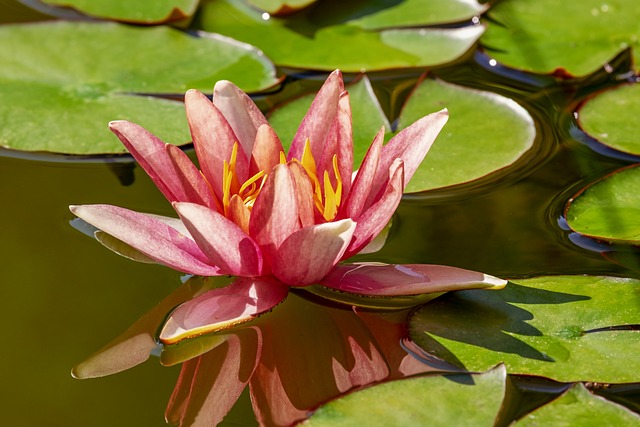Water: The Force Behind Earth’s Most Enigmatic Ecosystems
Water is a vital element that shapes the dynamics of life within our planet’s ecosystems. Its unique properties, driven by chemical and physical interactions, create complex habitats that feature a stunning diversity of flora and fauna. This article explores the critical role of water in the formation, maintenance, and sustainability of some of Earth’s most enigmatic ecosystems. From the lush rainforests to the arid deserts, water emerges as the underlying force driving ecological interactions and evolution.
The Science of Water
Before delving into specific ecosystems, it’s essential to understand the fundamental characteristics of water. Water is unique due to its polarity, allowing it to form hydrogen bonds. These bonds result in several remarkable properties such as high surface tension, cohesion, adhesion, and a high specific heat capacity. Such properties not only enable water to support life but also play a crucial role in various biological and ecological processes.
Water exists in three states: solid (ice), liquid (water), and gas (water vapor). Each state affects ecosystems in distinct ways. For example, in colder climates, ice forms on the surface of lakes and rivers, providing insulation to aquatic life below. Conversely, water vapor in the atmosphere plays a key role in weather patterns, influencing precipitation and temperature distributions essential for diverse ecological habitats.
Water and Ecosystem Diversity
The Earth’s surface is approximately 71% water, influencing various ecosystems, from freshwater habitats such as rivers and lakes to marine environments, wetlands, and even deserts. Each of these ecosystems displays unique adaptations and interactions largely dictated by the availability and distribution of water.
Freshwater ecosystems, which include rivers, lakes, and wetlands, are some of the most biologically productive environments on the planet. They provide essential resources for countless species and serve as critical habitats within larger landscapes. Marine ecosystems, such as coral reefs and oceanic environments, host an incredible array of biodiversity shaped largely by the saline nature of seawater. Understanding the role of water in these ecosystems unveils a narrative of resilience, adaptation, and intricate interdependencies.
Wetlands: Nature’s Sponges
Wetlands are among the most enigmatic ecosystems on Earth. These areas, where water is present either seasonally or permanently, serve as critical buffer zones between terrestrial and aquatic environments. They act as natural sponges, absorbing excess rainfall and mitigating flooding while also filtering pollutants, thereby improving water quality.
The biodiversity in wetlands is remarkable. They support a variety of plant species adapted to both flooded and dry conditions, such as cattails, reeds, and mangroves. The unique interface between land and water results in complex food webs, where microorganisms, invertebrates, fish, amphibians, reptiles, birds, and mammals coexist. The cyclic flooding and drying of wetlands also drive nutrient cycling, supporting primary productivity and energy flow through the ecosystem.
Wetlands are vital for migratory birds, serving as key stopover points on their long journeys. The immense ecological benefits they provide cannot be overstated; however, they face significant threats from urban development, agriculture, and climate change, underscoring the importance of their conservation.
Coral Reefs: The Rainforests of the Sea
Coral reefs are often referred to as the “rainforests of the sea” due to their unparalleled biodiversity. These ecosystems thrive in shallow, warm waters where sunlight penetrates, allowing the symbiotic relationship between coral polyps and zooxanthellae (photosynthetic algae) to flourish. Water quality and temperature are crucial factors that determine the health of coral reefs.
Corals build their intricate structures from calcium carbonate, creating habitats that support thousands of marine species. The relationship between water and coral growth is profound; not only do coral reefs provide habitat and food for numerous species, but they also act as natural barriers protecting coastlines from erosion and storm damage.
However, coral reefs globally are facing unprecedented stress due to climate change, ocean acidification, overfishing, and pollution. Rising sea temperatures lead to coral bleaching, a phenomenon where corals expel their zooxanthellae due to stress, ultimately risking their survival and the survival of the myriad of species that rely on them.
Freshwater Lakes and Rivers: Cradles of Life
Freshwater lakes and rivers are vital ecosystems characterized by their dynamic water flow and nutrient availability. These ecosystems provide habitats for diverse species of fish, amphibians, birds, and aquatic plants. Lakes can vary in size, depth, and nutrient composition, influencing the types of biological communities they support.
Rivers are particularly unique due to their flow dynamics. The continuous movement of water determines the physical characteristics of riverbanks and the distribution of species along their length. As water flows, it transports nutrients and sediments that play a key role in shaping the river’s ecological community.
Moreover, freshwater ecosystems are essential for human populations, providing drinking water, irrigation for agriculture, and recreational opportunities. They also influence major migratory routes for various species. However, urbanization, damming, pollution, and climate change pose significant risks to these ecosystems, compelling a need for sustainable water management practices to preserve their delicate balance.
Deserts: Life in a Drought
Deserts, though arid and seemingly inhospitable, are another intriguing example of ecosystems shaped by water, or the lack thereof. Water scarcity in deserts shapes the adaptations of the flora and fauna that survive there. Organisms in these ecosystems showcase remarkable adaptability, with plants such as cacti and succulents developing water-storing mechanisms, while animals may become nocturnal or burrow to escape the heat.
The rare occurrence of rainfall greatly influences the life cycles and reproductive strategies of desert organisms. Some plants only bloom when conditions are right, demonstrating stunning bursts of life and color after rigorous drought periods. Similarly, many animal species have life cycles timed to coincide with brief rainy seasons, showcasing the resilience of life in extreme environments.
Despite the harsh conditions, deserts are home to unique ecosystems that often rely on ephemeral water sources, such as oases or seasonal streams, further illustrating the critical role of water in maintaining biodiversity even in the most arid climates.
Climate Change: The Future of Water and Ecosystems
The intricate link between water and ecosystems becomes even more pronounced as climate change alters global weather patterns, affecting water availability across landscapes. Increased temperatures lead to more extreme weather events, including intense flooding and prolonged droughts, which can drastically disrupt established ecosystems.
Species migration patterns, reproductive cycles, and food availability are all at risk due to the shifting climate. Ecosystems that rely on seasonal water patterns may face collapse if these patterns are altered. For example, wetlands might dry up, impacting not just the flora and fauna that inhabit them, but also the human communities that depend on their services.
As we look to the future, it is apparent that sustainable management of water resources is not merely an ecological issue; it is an essential aspect of global health, economic stability, and food security. Recognizing our interdependence with water systems and advocating for conservation practices can lead to a more resilient ecological balance.
Conclusion
Water is undeniably an enigmatic force that shapes the fabric of life on Earth. Understanding its critical role in diverse ecosystems—from the resilience of wetlands to the vibrant life of coral reefs—emphasizes the necessity of protective measures. The intricate networks of life are contingent upon the availability, quality, and management of water resources. In a changing climate, safeguarding our ecosystems hinges on our ability to recognize and respond to the fluid relationships that water embodies.
In celebrating and understanding the vital role water plays in ecosystems, we not only enhance our appreciation for the natural world but also instigate actions that may help ensure the survival of these habitats for future generations. As stewards of the Earth, our responsibility toward water and the ecosystems it nurtures is greater now than ever before.



